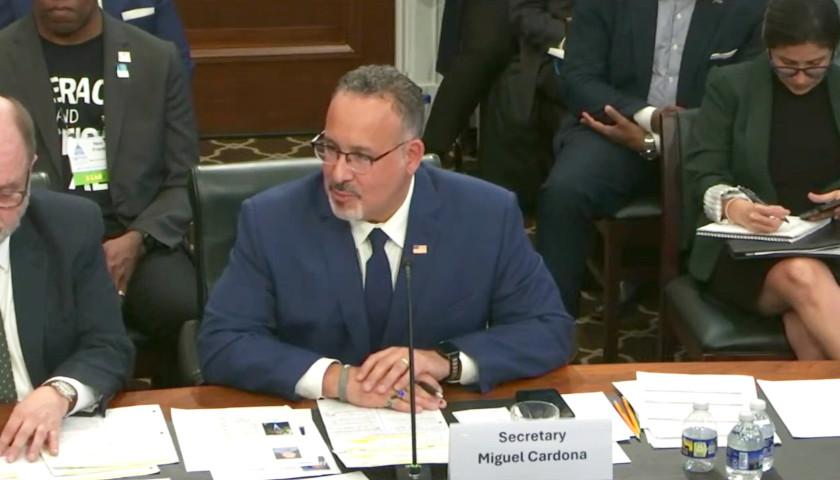The Ohio House passed a bill Wednesday, with bipartisan support, that would decriminalize fentanyl testing strips, pushing forward with a proposal that supporters claim will help prevent fatal overdoses and save lives.
In the state of Ohio, fentanyl drug testing strips are considered drug paraphernalia and it’s illegal for someone to be in possession of them.
House Bill (HB) 456 sponsored by state Representative Kristin Boggs (D-Columbus) and co-sponsored by 26 supporting bipartisan lawmakers, would remove the classification of illegal drug paraphernalia under the measure.
Free fentanyl drug testing strips which individuals use to detect the powerful synthetic opioid often found laced in other drugs, have become increasingly common in many cities across the state. Health departments and organizations all across the state have been providing these resources.
Even though city officials promote the strips those in possession of them can get in trouble.
If an individual possesses or uses the strips, they could be charged with a fourth-degree misdemeanor, according to current state law. That could be up to thirty days in jail and a fine of up to $250.
“HB 456 would help create widespread access to fentanyl drug testing strips. This is a critical step forward to prevent more Ohioans from dying from fentanyl drug overdoses,” Boggs said.
According to state data, fentanyl, the highly addictive synthetic opioid, is the leading cause of drug-related deaths in Ohio.
According to the Ohio Department of Health, in 2020, fentanyl played a role in an overwhelming 81% of overdose deaths. This is up from 71% in overdose deaths in 2017 and the discovered presence of fentanyl continues to steadily increase.
In previous supporter testimony, Kelsey Schmuhl of the Ohio Pharmacists Association said the bill would provide a way to “meet people where they are” when it comes to fighting drug addiction, as well as create a path forward in evidence-based strategies for harm reduction.
“Considering the increased prevalence of fentanyl, and the demonstrated threat that it poses, it is wise of us to remove fentanyl test strips from the list of illegal drug paraphernalia. By decriminalizing the possession of fentanyl test strips, HB 456 can help to stem the tide of overdoses caused by hidden fentanyl, while also preserving available sources of Naloxone and other drugs used to counteract overdoses,” Director of Policy and Public Affairs for the Ohio Attorney General Michael Rodgers said.
No one has testified against the bill however, Thomas Powell, civic engagement organizer for River Valley Organizing notes, that a common argument he hears is that decriminalizing the test strips will just encourage more people to use drugs.
To some opponents, such as the National Library of Medicine (NIH), the test strips are even more objectionable than other forms of harm reduction, like distributions of clean syringes, because those at least prevent the spread of H.I.V., hepatitis, and other dangerous infections to users and non-users.
In fact, according to the NIH, there is not yet a substantial body of evidence that directly shows test strips have saved lives. Results have been mixed from a handful of relatively small studies looking at whether the strips deter sustained drug use.
Proponents of the test strips however maintain that there is no evidence supporting they encourage drug use.
“There is no scientific evidence to support this notion that harm-reduction services like fentanyl test strips somehow encourage drug use, but there is significant evidence to support the fact that these tools can save lives,” Dr. Rahul Gupta, director of the federal Office of National Drug Control Policy said.
The bill has now moved to the Senate.
– – –
Hannah Poling is a lead reporter at The Ohio Star and The Star News Network. Follow Hannah on Twitter @HannahPoling1. Email tips to [email protected].
Photo “Kristin Boggs” by Ohio House of Representatives. Background Photo “Ohio Capitol” by James St. John. CC BY 2.0.








